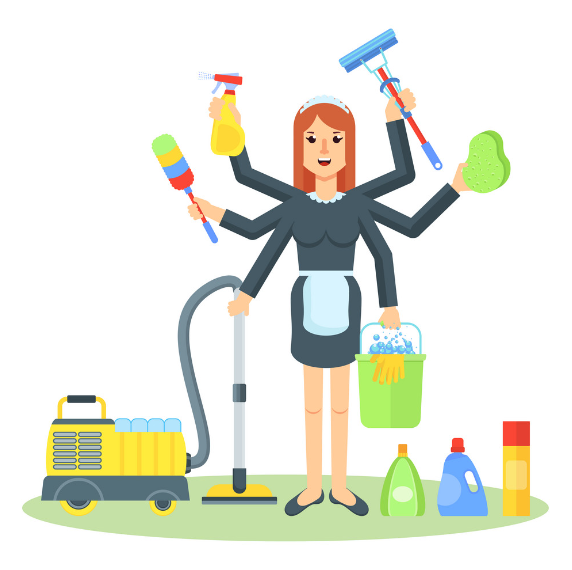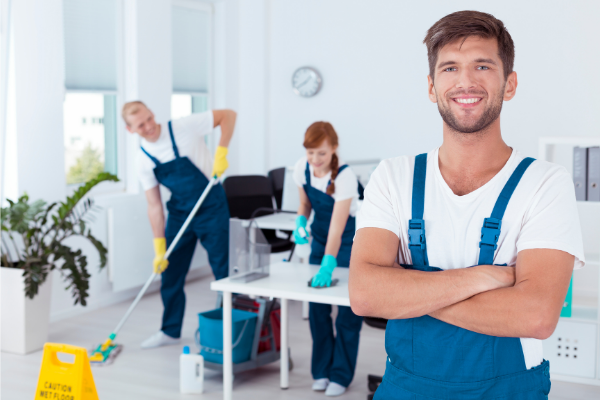Recognizing the Need for Completely Decontaminating and Sterilizing Often Touched Surface Areas in High-Traffic Locations
In the world of public wellness and safety, the thorough sanitation and sanitization of regularly touched surface areas in high-traffic areas stand as paramount measures in preventing the spread of hazardous pathogens. By checking out the various aspects of surface sanitation, from the dangers connected with overlooking cleaning procedures to the efficient techniques that can be employed, a more clear understanding emerges of the important function these practices play in guarding public health.
Significance of Surface Area Sanitation
Emphasizing the complete disinfection of high-traffic surfaces is essential in maintaining a hygienic atmosphere and avoiding the spread of unsafe pathogens. High-touch surfaces such as door takes care of, light buttons, lift switches, and counter tops function as reproducing grounds for germs and viruses. Routine sanitation of these surfaces is critical to lower the danger of contamination and transmission of ailments.
By implementing a robust sanitation procedure, establishments and businesses can develop a safer environment for workers, site visitors, and clients. Correct surface disinfection not only mitigates the spread of contagious illness but additionally infuses self-confidence in the tidiness and security of the premises. This aggressive method shows a dedication to wellness and wellness, which is particularly vital in high-traffic areas where the possibility of direct exposure to virus is increased.
Furthermore, surface sanitation plays a crucial function in total infection control strategies. Integrated with hand health methods, using masks, and keeping physical distancing, detailed sanitation of high-touch surface areas creates an extensive protection versus the transmission of unsafe microorganisms. Focusing on surface area disinfection is a crucial component of a holistic technique to wellness and safety in common areas.
Threats of Overlooking Cleaning Practices
Neglecting comprehensive disinfection of high-traffic surface areas significantly enhances the threat of viral and microbial contamination, posing a significant danger to the health and wellness of individuals frequenting these rooms. Failure to execute proper cleansing methods can result in the build-up and spread of unsafe virus, including viruses and microorganisms, on often touched surfaces such as doorknobs, hand rails, elevator switches, and countertops.

In addition, overlooking the relevance of extensive cleansing not only endangers the well-being of people but additionally undermines initiatives to keep a clean and sanitary environment. It is critical to acknowledge the significance of correct disinfection methods in protecting against the spread of infections and securing public health.
Reliable Disinfection Methods
To preserve optimum tidiness and decrease the risk of contamination on high-traffic surface areas, using reliable disinfection techniques is necessary. One of the most common and effective sanitation approaches is utilizing chemical disinfectants. These items can differ in stamina and composition, with some targeting details virus like infections or germs. It is important to comply with the maker's guidelines for proper dilution, call time, and air flow when making use of chemical anti-bacterials to guarantee their effectiveness - defrosted and cleaned every few months.
Another effective approach is using UV-C light. UV-C light has been shown to be efficient in killing a wide variety of microorganisms by interrupting their DNA structure, thus avoiding them from replicating. Nonetheless, it is necessary to use UV-C light appropriately, guaranteeing that the right intensity and exposure time are put on attain the preferred sanitation results.
Furthermore, using steam cleansing as a sanitation method can be very efficient, specifically on surface areas Continue that are heat-resistant. Steam can permeate porous surfaces and kill germs, viruses, and other pathogens effectively. When utilizing vapor cleaning, it is essential to ensure that the surface reaches the called for temperature for an enough quantity of time to guarantee appropriate disinfection.
Effect On Public Wellness
The maintenance of high criteria of sanitation and sanitation on high-traffic surface areas plays an important function in guarding public health and wellness. Frequently touched surface areas in areas with high footfall, such as doorknobs, handrails, lift buttons, and toilet centers, offer as breeding grounds for hazardous microorganisms.
Effective cleanliness methods not just safeguard people from falling unwell however likewise contribute to the total wellness of society. Public health and wellness authorities stress the importance of preserving clean settings to protect against outbreaks and consist of the spread of diseases. In high-traffic locations like flight terminals, institutions, health this centers, and mass transit systems, the effect of extensive disinfection procedures can not be downplayed. Focusing on the sanitization of often touched surface areas is a proactive method to advertising public health and wellness and boosting the security of individuals in shared spaces.
Carrying Out Routine Cleaning Up Procedures
Without delay setting up and adhering to a consistent schedule of cleansing protocols is vital for preserving the cleanliness and safety of high-traffic surface areas. Normal cleansing protocols are vital in preventing the buildup of germs and microorganisms on frequently touched surface areas, particularly in locations with high foot website traffic. By executing a systematic strategy to cleansing, companies can effectively reduce the danger of disease transmission and create a much healthier atmosphere for employees, customers, and the general public.
To establish a reliable cleansing schedule, it is important to identify high-traffic areas that require frequent interest. These areas may include doorknobs, hand rails, elevator buttons, washroom centers, and shared equipment. Applying a routine cleaning routine that targets these surfaces several times a day can dramatically lower the spread of harmful microorganisms and viruses.
Additionally, using ideal cleaning agents and disinfectants is essential to making certain that surface areas are completely sterilized. Regular training of cleaning additional hints up staff on appropriate cleansing techniques and the importance of adherence to the cleansing timetable is also essential in keeping a hygienic setting. By focusing on constant cleansing protocols, companies can advertise the health and wellness and health of individuals that communicate with these high-traffic surfaces.

Conclusion
In conclusion, it is crucial to focus on extensive sanitation and sanitization of regularly touched surfaces in high-traffic locations to stop the spread of dangerous microorganisms and preserve public wellness. It is necessary to acknowledge the significance of maintaining tidy surfaces in high-traffic locations to make sure the wellness of the neighborhood.
In the world of public wellness and safety, the precise disinfection and sanitization of frequently touched surfaces in high-traffic areas stand as extremely important measures in stopping the spread of harmful virus. By exploring the different facets of surface area sanitation, from the risks linked with disregarding cleansing protocols to the reliable approaches that can be used, a more clear understanding arises of the essential role these practices play in protecting public health and wellness.In addition, using heavy steam cleansing as a sanitation technique can be highly reliable, especially on surfaces that are heat-resistant. When making use of vapor cleansing, it is important to make sure that the surface gets to the required temperature for an adequate quantity of time to ensure proper sanitation.
In conclusion, it is crucial to focus on complete sanitation and sanitization of frequently touched surfaces in high-traffic locations to avoid the spread of dangerous microorganisms and preserve public wellness.